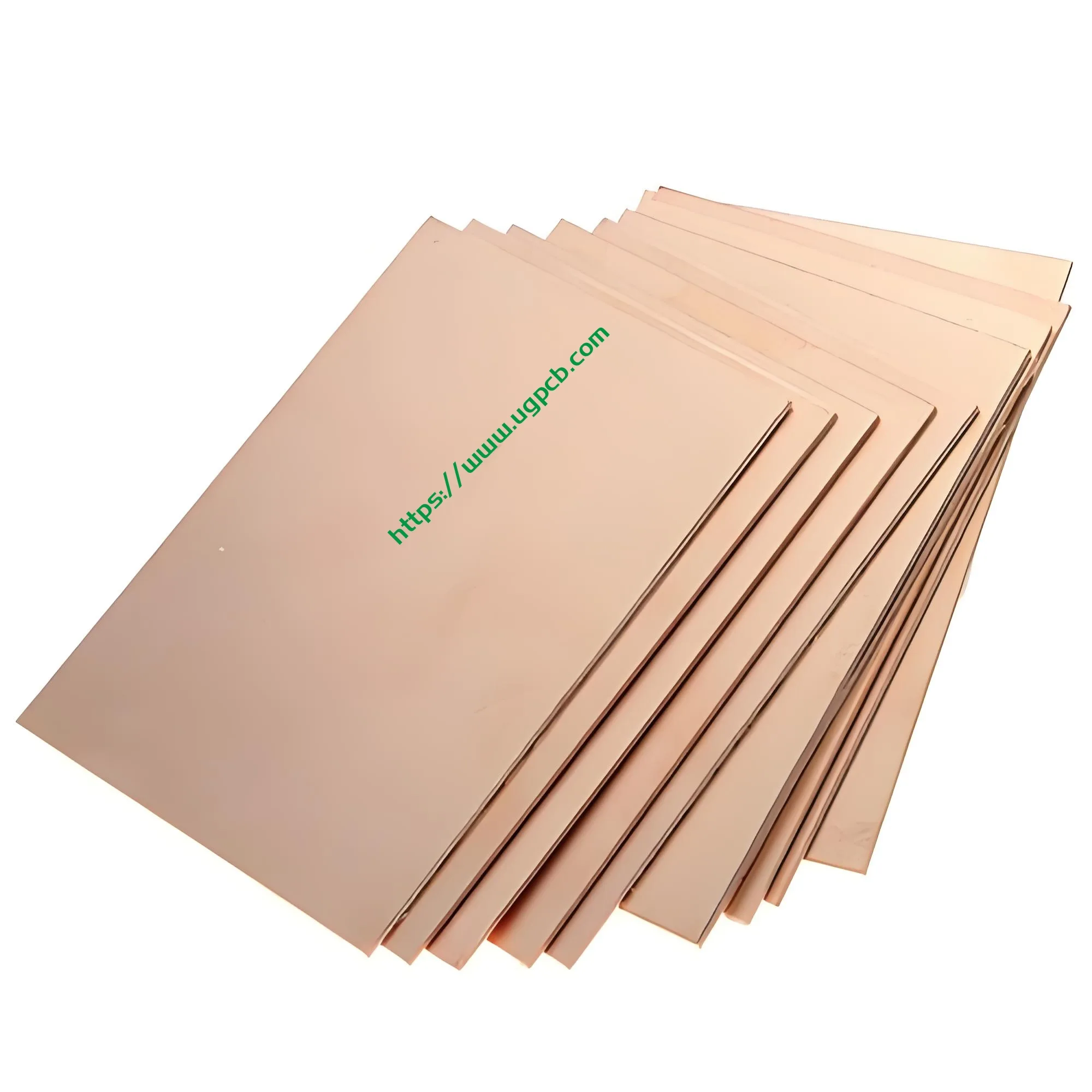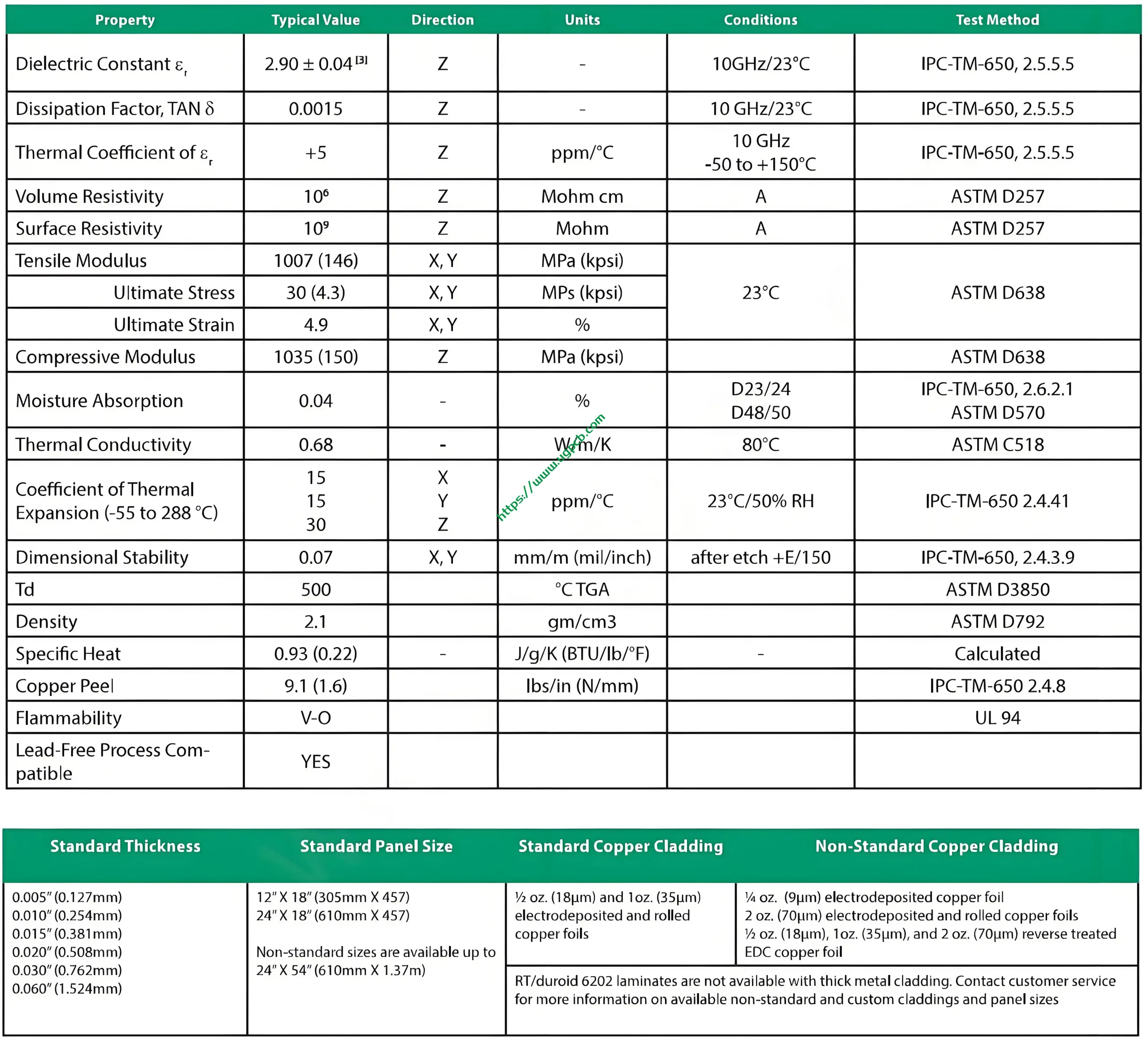Rogers RT/duroid6202 High Frequency Circuit Material
Rogers RT/duroid6202 (Rogers 6202) is a high-frequency circuit material known for its low loss and low dielectric constant. This laminate exhibits excellent electrical and mechanical properties, making it suitable for the design of complex microwave structures. The material boasts both mechanical reliability and electrical stability, enabling its use in planar resistance applications.

Dimensional Stability and Copper Foil Options
Good dimensional stability can be achieved by adding limited braided glass reinforcements, allowing the manufacturing of precision tolerance planar resistors. The copper foil options available include:
- 1 a 2 oz/ft² electrodeposited copper foil
- 1 oz and 2 oz rolled copper foil
- 1 onz, 1 onz, y 2 oz reverse treated Cu foil
- Electrodeposited copper foils with resistance layers specified as coatings on standard dielectric thicknesses:
- 0.005″ (0.127milímetros)
- 0.010″ (0.254 milímetros)
- 0.015″ (0.381 milímetros)
- 0.020″ (0.508 milímetros)

RT/duroid6202 (non-reinforced) is also available with dielectric thicknesses of 0.020 y 0.030.
Aplicaciones
Rogers RT/duroid6202 is particularly suitable for applications requiring unique properties, including flat and non-planar structures such as antennas and complex multilayer circuits with interlayer connections.
PCB Material Specification
The PCB material specification for Rogers RT/duroid6202 includes the following features:
- Dielectric constant (Dk) de 2.90 +/- .04
- Low dissipation factor of .0015 at 10GHz
- Low thermal coefficient of Dk at 5 ppm/°C
- Tight thickness control
For those needing microwave radio frequency PCBs, click here for more information on Microwave Circuit.
 UGPCB LOGO
UGPCB LOGO


